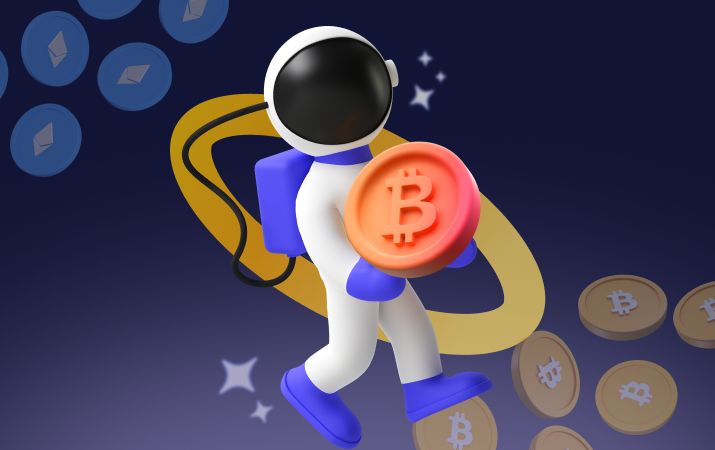Numerous decentralized application (DApp) projects have emerged over the past two years. Correlating with the democratization of Web3 and cryptocurrencies, decentralized applications have real potential within the ecosystem. We're going to explain how they work and what they're used for, as well as their impact on the future of the Internet.
Definition of a DApp
A DApp is a software application built on smart contracts. These decentralized applications (DApps) have a graphical interface that enables users to interact with the various smart contracts.
Compared to a traditional application that uses a private server and a centralized database to store data, a DApp will use the blockchain to do so. This data is then publicly accessible and totally transparent, yet immutable.
The distinctive feature of a DApp is its graphical interface, which is only incidental. Any developer can duplicate the interface if it's open-source, or develop their own GUI to communicate with the application's smart contract.
What's the point of a DApp?
More and more decentralized applications are emerging, with a wide range of uses in different fields:
Setting up crypto wallets.
Play to Earn.
Buying, selling and trading NFTs (non-fungible tokens) on marketplaces.
Use decentralized insurance.
Deploy and manage nodes.
All these platforms are decentralized applications and operate via smart contracts on different blockchains. So there are no limits to the development of new platforms and functionalities.
The difference between DApps and traditional applications
Decentralized applications were created to solve the problem of traditional applications. As explained above, a traditional application runs on a private server and a decentralized database.
Architecture of a traditional Web 2 application
The architecture is fairly simplistic. It operates on a front-end/back-end system. The front-end corresponds to the user interface and the back-end to the administrator interface. Data is stored in a database. As a result, this operation is based on a centralized environment.
Unlike centralized applications, DApps operate in a much more liberal way, despite the complexity of their architectures. DAppqs emerged as a response to the centralization problem inherent in today's web. To stand out from the crowd and offer an effective response, several features are essential.
Decentralized application architecture
The architecture of a DApp is, of course, made up of a modifiable front-end, meaning that the graphical interface is duplicable and open source. As shown in the diagram, the application operates via the execution of smart contracts by EVM (Ethereum Virtual Machine). DApps operate on a blockchain.
The difference between these two types of application lies in data management. In a traditional application, data is private, stored and readable only by the administrator, who acts centrally. With a DApp, the data operates on a blockchain, where it is visible, traceable and unalterable, so there's no risk of it being compromised.
The advantages of a DApp
The development of decentralized applications is an advantage for freedom fighters because of their autonomous aspects. Indeed, the absence of a central authority offers users a strong resistance to censorship. This robustness is expressed by the inability to arbitrarily block or deny access to a service or platform.
What's more, the transparency inherent in blockchain gives users greater confidence, while enabling them to free themselves from third-party control thanks to the automatic execution of smart contracts.
Example of DApps
Several types of decentralized applications can be developed. Some believe that these new types of services represent a paradigm shift in the way society approaches the exchange of value. Here are a few well-known examples:
Metamask
One of the best-known decentralized applications is Metamask, a virtual crypto wallet. It enables users to access their cryptocurrencies via a browser extension or mobile app, which can then be used to interact with decentralized applications.
OpenSea
OpenSea is a decentralized marketplace that enables users to buy NFTs and generate them for free. The platform is based on the Ethereum ERC-721 standard. To use the marketplace, a crypto wallet such as MetaMask is required.
The Sandbox
The Sandbox is a sandbox-style Play to Earn with virtually unlimited possibilities, such as creating your own game on the platform. The system is based on the purchase of land. Numerous companies, including Adidas and Atari, have invested in the platform. The Sandbox even has its own token, which can be used to purchase items on the game's marketplace.
Uniswap
Uniswap is a decentralized financial protocol used to exchange cryptocurrencies. It is provided on decentralized blockchain networks, running open source software. This contrasts with cryptocurrency exchanges managed by centralized companies such as Coinbase or Binance
The mass arrival of DApps shows just how important developer interest in cryptocurrencies is. It's easy to see why many influential Web3.0 investors are choosing to focus on decentralized applications. The principles of decentralization and trust make it possible to create a system in which users are at the heart of the projects The field is growing rapidly, with many use cases yet to be developed. The future of these DApps promises to be exciting.







